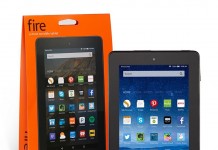![]() While most of the attention on yesterday’s Kindle announcement centered around the new prices and new devices, a couple of interesting articles have turned up about one of the less-in-the-spotlight elements of the Kindle Fire, the new Kindle Silk web browser.
While most of the attention on yesterday’s Kindle announcement centered around the new prices and new devices, a couple of interesting articles have turned up about one of the less-in-the-spotlight elements of the Kindle Fire, the new Kindle Silk web browser.
According to these more in-depth pieces in Wired Cloudline and TechWorld (found via Slashdot), Silk begins at the same place as previous split-client browsers such as Opera Turbo but then goes further, with a few inherent advantages that are part and parcel of Amazon’s cloud efforts.
Amazon’s Elastic Compute Cloud (EC2) is the network of computers and storage that Amazon uses to provide all its cloud-based services, both to end users and to the thousands of websites it hosts for businesses (including, for example, Netflix, as Jeff Bezos pointed out during his presentation). And that is where Silk is going to do its pre-processing. And it should be pretty darned fast, per TechWorld:
EC2 has, "for all practical purposes, unlimited computational power and unlimited bandwidth," Bezos said.
The articles go into additional technical detail too involved for me to summarize, having to do with use of constant compression, and ditching HTTP in favor of SPDY, and so on, but suffice it to say: there are significant improvements in speed here. I wonder if, as Wired suspects, Amazon might be aiming at a desktop version of Silk somewhere down the road? What might that be like?
One other advantage Amazon gains from Silk is that Kindle Fire tablets (and any other devices that get to use Silk in the future) will have lightning-fast access to any website or other Internet resource that already lives in EC2—after all, it’s already right there; Amazon doesn’t have to step outside its own cloud to fetch it. (I wonder if businesses will, at some point, begin to openly advertise they run on the Amazon cloud for fastest compatibility with Fire tablets? Depending on how fast the Silk browser takes off, it could happen.)
Of course, this is not without its privacy downside. The Wired piece links to this one on IntoMobile, warning that using Silk’s split-client mode will give Amazon access to potentially huge amounts of information about your browsing habits, as well as your Amazon buying, e-book checking out, video viewing, etc. habits.
Because you’re logged into your Fire at all times, Amazon not only knows where you go on the web, but what you’ve purchased from Amazon itself. They can combine that data and do several things, one option being to use your web history to predict what items you’re interesting in purchasing. They’d be foolish not to use all the product reviews you’ve been reading for a camera you’re thinking of buying to offer you a special deal on your next DSLR the next time you load up Amazon’s homepage.
Or, further, it could use that information to go into advertising itself, being able to target you ever better and better due to the things it’s been learning about you.
Of course, some would find this more of a problem than others. Frankly, I’d rather like to be offered discounts on something I’m thinking about buying. But I know others would have differing opinions about that.
To note, the Silk browser can be used in a standard, all-in-the-tablet browser configuration. (Though for people who distrust Amazon in the cloud, I can’t see why they’d be more likely to trust it wouldn’t sneak peeks at their data through the tablet, too.)
































Thinking about how low the new K4 devices are priced, and the potential for tracking, one has to wonder if advertising is the fourth leg of the Amazon chair. They started with e-commerce, created Amazon Web Services, and launched a successful line of devices. They’ve been running ads on their websites for some time now and made an investment in LivingSocial. They are a deliberate crew and clearly plan ahead.